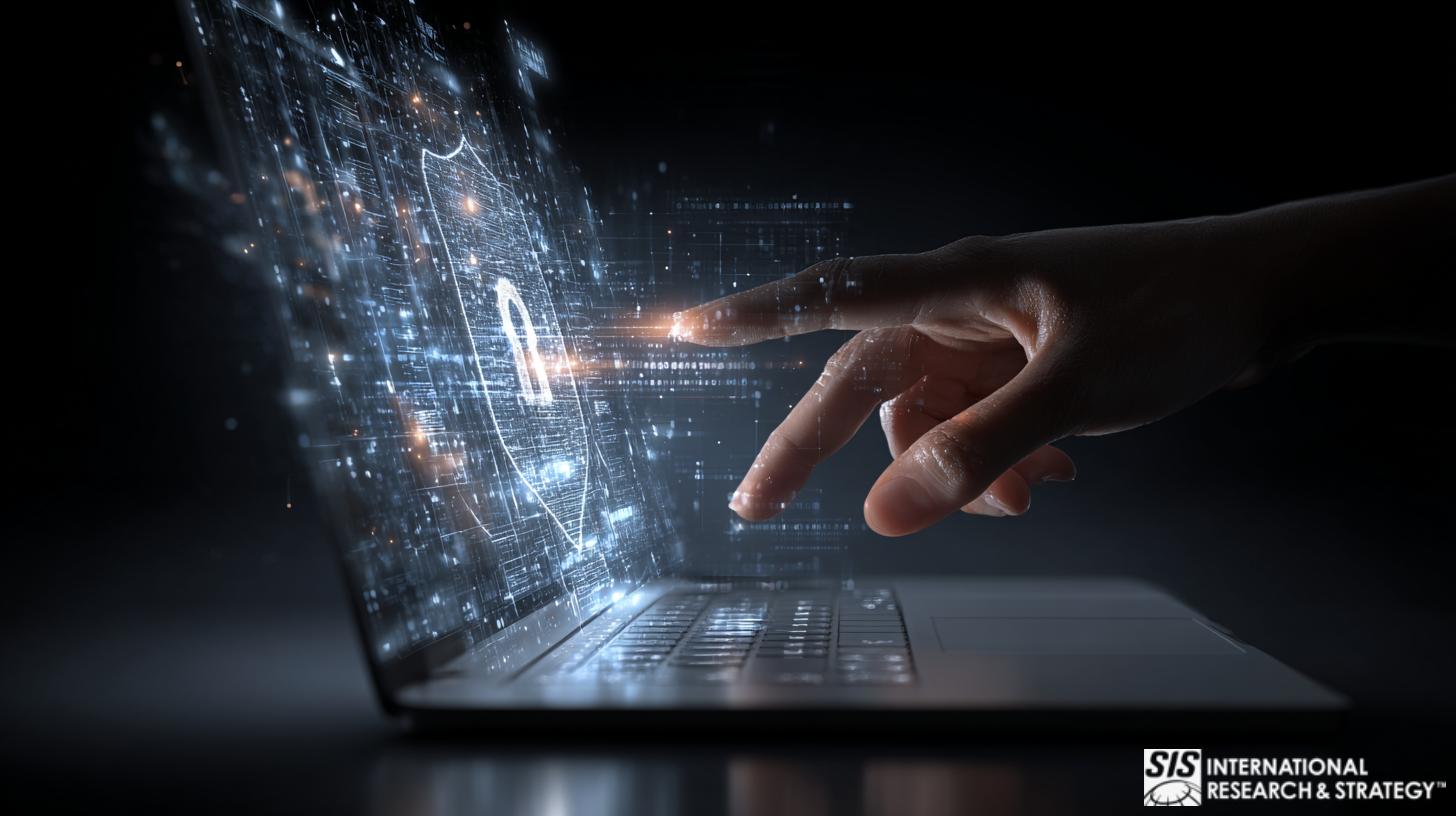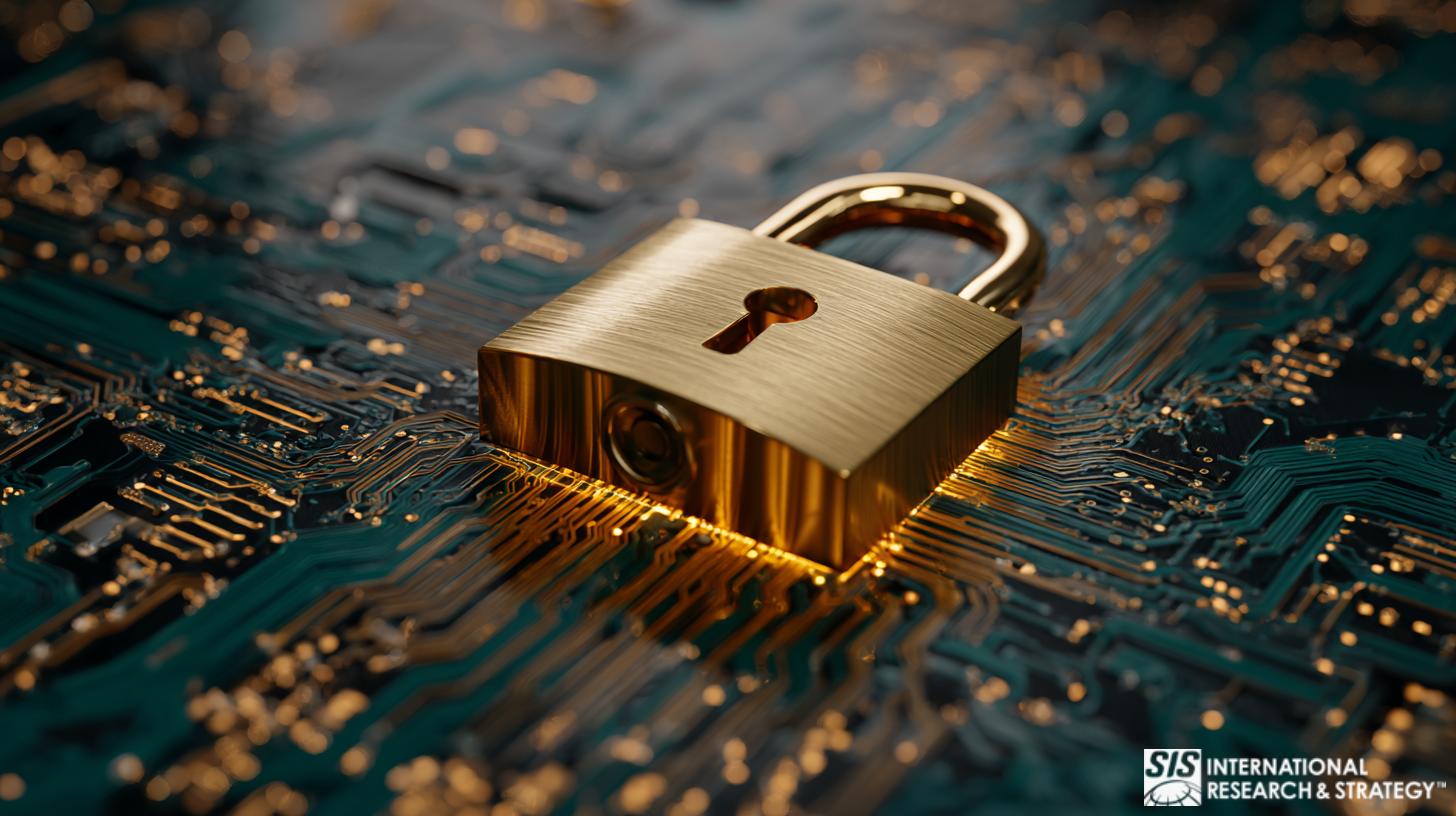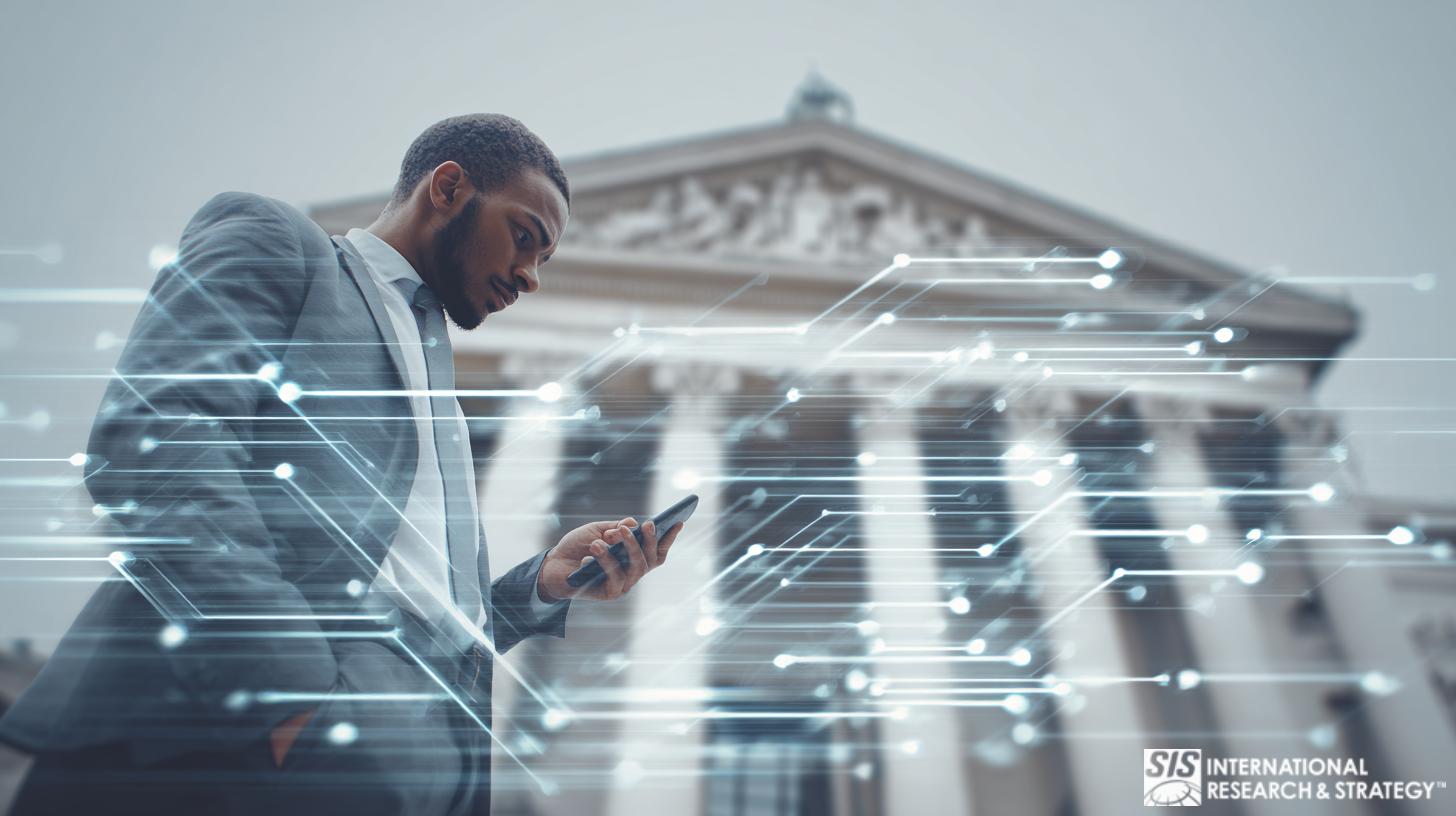
Ein völlig anderes Virus
Ein kurzer Überblick über den anhaltenden Kampf zur Eindämmung der Flut von Cyberangriffen im Gesundheitssektor.
In addition to subversive hacking in the business world, where private information can be compromised and sensitive company data absconded with, cybersecurity measures are now employed to negate the effects of hacking by foreign entities, used a political weapon. It is an increasingly serious global problem, and one that has necessitated the implementation of advanced cybersecurity methodologies to counteract the increasingly sophisticated capabilities of hackers to subvert these very systems.
“In recent years, cybersecurity has been a growing concern in healthcare, with high-profile cyber-attacks and vulnerabilities causing disruptions for insurers, hospitals, and medical device makers. The stakes for patients are high too as patient data could be lost or tampered with, hospital services interrupted, or patients harmed through attacks targeting specific devices … “ 1
Staatliche Interventionen zur Bekämpfung der Cyberkriminalität
The rapid digitization of the healthcare industry makes this sector particularly vulnerable to cyber attack, and this fact has not been lost on the US Congress. The House Energy and Commerce Committee recently convened to address cybersecurity in the health sector. Information Sharing and Analysis Centers (ISACS) may be key in providing enhanced security for healthcare providers and in thwarting efforts of would-be cyber attackers.
Through the interactive efforts of the 24 organizations that comprise the National Council of ISACs (NCI), great efforts are being made to “maximize information flow across the private sector critical infrastructures and with government. Critical infrastructure sectors and subsectors that do not have ISACs are invited to contact the NCI to learn how they can participate in NCI activities.”2
It is, of course, a Herculean undertaking to strengthen the partnership between public and private entities in healthcare with regard to cybersecurity, considering the myriad industries and agencies of government that are responsible for regulating and delivering said healthcare. Congress has been encouraged to provide tax breaks and other incentives to prompt companies to get involved with the ongoing effort of ISACs.
Geringe Beteiligung behindert die Umsetzung der Cybersicherheit
Unfortunately, poor participation rates among healthcare facilities have been a persistent problem in the ongoing efforts to implement effective cybersecurity measures across the sector. According to Terry Rice, vice president of IT risk management and chief information security officer at Merck, “companies may be hesitant to share information within an ISAC if they fear the information will not remain confidential to its members.”3
“I think the most shocking statistic was really the fact that 40% of the individuals at the top of an organization–executives like CEOs and CIOs, and even board members–didn’t feel personally responsible for cybersecurity or protecting the customer data.” Dave Damato, Chief Security Officer at Tanium, on CNBC’s Squawk Box, spricht über Cybersicherheit in der Gesundheitsbranche 13
Die hohen Kosten der Cyberkriminalität im Gesundheitswesen

Aside from the obvious threat of compromised patient information and other incidents of data theft, failures of cybersecurity are incredibly expensive, to the tune of $6.2 billion annually, according to a 2016 research project conducted by the Poneman Institute. Insights revealed in their studies revealed that “nearly 90 percent of the healthcare organizations … had endured a data breach during the previous two years. Forty-five percent had more than five data breaches in that period, with the average cost of a cyber attack totaling $2.2 million. The data contained in electronic health records (EHRs) is often cited as the reason healthcare is such an attractive target in the eyes of a hacker.”4
As secure as people like to believe their health information is in the possession of their doctor’s office or hospital, it is often not the case. The ongoing digitization of health records has been an expensive proposition for the healthcare industry. Securing all that information is another monumental expense, and sometimes this part of the cybersecurity equation has been neglected in the interest of cost-savings, or just by the large-scale nature of the overall endeavor.
Die lukrative Natur des Cyberdiebstahls im Gesundheitswesen
Of course, health records are a hot commodity on the black market, and they can fetch top dollar from parties seeking to obtain personal information, billing addresses, and credit card numbers. Hacking can be a very lucrative enterprise, indeed. Consider this example. “Hackers made off with more than 2.2 million patient records from Fort Myers, Florida-based 21st Century Oncology in March of 2016. A month later, someone stole a laptop with 205,748 unsecured patient records on it from Premier Healthcare, LLC.” 5
Das Aufkommen von Ransomware
Ransomware ist für die meisten Menschen ein neuer Begriff, die mit den jüngsten WannaCry-Angriffen weltweit vertraut sind, die kritische Infrastruktursysteme lahmlegen und hohe Lösegeldforderungen von denjenigen einfordern, die der Angst und dem potenziellen Datenverlust zum Opfer fallen, die für solche Angriffe charakteristisch sind. Insbesondere die Gesundheitsbranche ist anfällig für Ransomware-Angriffe.
„Krankenhäuser sind das perfekte Ziel für diese Art der Erpressung, da sie Intensivpflege leisten und auf aktuelle Informationen aus Patientenakten angewiesen sind. Ohne schnellen Zugriff auf Medikamentenhistorien, Operationsanweisungen und andere Informationen kann die Patientenversorgung verzögert oder gestoppt werden, was Krankenhäuser eher dazu veranlasst, ein Lösegeld zu zahlen, als Verzögerungen zu riskieren, die zu Todesfällen und Klagen führen könnten.“ 6
Ransomware malware, in effect, locks up a computer and makes data inaccessible unless a ransom is paid to the perpetrator. Usually, this payment is made in the form of Bitcoin. In most instances, a time limit is established for the ransom to be paid, otherwise the computers data will be destroyed. Though most stricken parties don’t pay the ransom, enough do to make it a particularly lucrative criminal enterprise.
The healthcare industry has been vulnerable to ransomware attacks because, surprisingly, many hospitals have taken inadequate steps to prevent cybersecurity breeches. Instead, most hospitals have focused their primary concern on meeting HIPAA compliance and meeting federal guidelines to ensure the security of patient information. Ultimately, most employees in healthcare are simply not trained well enough to recognize and thwart cyber attacks before they occur. Even when adequate training and cybersecurity measures are in place, it is a continuous challenge to outwit perpetrators who constantly remain one step ahead of the game.
Auch IoT-Geräte sind gefährdet
To add a layer of seriousness to the present situation, cyber attacks can affect not only computers, but devices that are connected to them, as well. Medical tools, heart and glucose monitors are but a few examples of devices vulnerable to cyber attack. Vice-President Dick Cheney famously demanded that his pacemaker be made safe from cyber attack, lest those with ill-intent not manipulate the function of his device remotely. Quite frankly, interference with such devices can be deadly for the patients who depend on them to live.
Ein Beispiel für medizinisches Hacking: „Bei einem derzeit verwendeten Exploit namens MedJack injizieren Angreifer Malware in medizinische Geräte, um sie dann über ein Netzwerk zu verbreiten. Die bei solchen Angriffen entdeckten medizinischen Daten können für Steuerbetrug oder Identitätsdiebstahl verwendet werden und sogar zur Nachverfolgung aktiver Medikamentenrezepte verwendet werden, sodass Hacker Medikamente online bestellen und dann im Darknet verkaufen können.“ 7
„No patients have, as far as I know, been killed due to a hacked pacemaker, but patients have been killed due to malfunction[s] of their medical devices, configuration errors, and software bugs. This means that security research in the form of pre-emptive hacking, followed by coordinated vulnerability disclosure and vendor fixes, can help save human lives.„Marie Moe, Sicherheitsforscherin bei SINTEF, in „Macht weiter, Hacker. Brecht mir das Herz” (Wired)13
Die FCC hat nun vorgeschlagen, dass IoT-Anbieter von medizinischen Geräten Sicherheitsmaßnahmen in die von ihnen hergestellten Produkte einbauen sollen; das Schlüsselwort dabei ist „vorgeschlagen“. Die tatsächliche Einführung verbindlicher Sicherheitspraktiken und -anforderungen für diese Hersteller ist ein zeitaufwändiges Unterfangen. Darüber hinaus besteht auch für Netzwerke, die Daten zwischen Geräten und Datenbanken übertragen, ein dringender Bedarf an der Implementierung und Überwachung von Cybersicherheit.
Ein neuer Präsident, eine neue Ordnung
There was much speculation as to how the Trump administration would address issues of cybersecurity. On May 11, 2017, the president signed an executive order that mandated a review of the nation’s overall abilities to combat criminal cyber-activity. The order places the brunt of responsibility concerning cybersecurity on federal agencies which were to do risk assessments and turn in their respective reports within 90 days. Additional reports examining critical infrastructure risks were due six months after the president’s order was issued.
„Die Anordnung fordert eine Überprüfung der Bedrohung durch Botnetze, die Websites mit automatisch generiertem Spam-Verkehr angreifen. Die Mirai-Botnetz war im vergangenen Jahr für erhebliche Internetausfälle verantwortlich. Access Now sagt jedoch, dass die Anordnung auch das Verfahren der Regierung zur Offenlegung von Schwachstellen und ihre Reaktion auf Datenschutzverletzungen berücksichtigen sollte.“
There is no overall preventative measure or measure that can eliminate the risk of cyber attacks. Rather, hospitals, clinics, and private practices can only hope to work together and manage the continuous risks in the interest of protecting the private information and the general safety of their patients. Concurrently, continuous technological advancements will hopefully address the vulnerability of medical devices and computer networks.
Diese Bemühungen, die potenziell verheerenden Auswirkungen der Cyberkriminalität im Gesundheitssektor und darüber hinaus einzudämmen, reichen weit über die Vereinigten Staaten hinaus. Derzeit laufen weltweite Bemühungen, die Flut der Cyberangriffe weltweit einzudämmen oder zumindest die Auswirkungen der scheinbar nie endenden Bemühungen der Cyberkriminellen zu minimieren, Gesundheitssysteme zu infiltrieren und Chaos anzurichten und zu erpressen, wo immer es möglich ist, zu welchen schändlichen Zwecken auch immer.
Politische Motivationen für Cyberangriffe

With the hostile political climate that exists between North Korea and virtually every other country in the civilized world, it is not surprising that the rogue nation has been cited as a probably offender in the recent WannaCry ransomware attacks, and other ill-willed endeavors undertaken for political reasons and for the purposes of financial extortion.
„Cybersicherheitsforscher haben technische Hinweise gefunden, die ihrer Meinung nach Nordkorea mit dem globalen Cyberangriff mit der „Ransomware“ WannaCry in Verbindung bringen könnten, der … infizierte mehr als 300.000 Rechner in 150 Ländern. Symantec and Kaspersky Lab said … some code in an earlier version of die WannaCry-Software sei auch in Programmen der Lazarus Group aufgetaucht, die von Forschern vieler Unternehmen als eine von Nordkorea gesteuerte Hackeroperation identifiziert wurde.“ 10
Nicht alle Experten glauben, dass der WannaCry-Ransomware-Angriff finanzielle Gründe hatte. Manche, wie Matthew Hickey von der britischen Cyber-Beratung Hacker House, glauben, dass die Täter einfach „so viel Schaden wie möglich anrichten“ wollten. Dies war sicherlich in den Ländern der Fall, die am stärksten von dem Angriff betroffen waren, darunter Indien, Taiwan, die Ukraine und Russland.
Einige, wie der russische Präsident Wladimir Putin, machten die NSA für ihre angebliche Rolle bei den WannaCry-Ransomware-Angriffen verantwortlich. Die WannaCry-Technologie basiert vermutlich auf einem durchgesickerten Tool, das eine Sicherheitslücke in Windows ausnutzt, die anscheinend von der NSA stammt. „Wir sind uns völlig bewusst, dass die Genies, insbesondere die von Geheimdiensten geschaffenen, ihren eigenen Autoren und Schöpfern schaden könnten, wenn sie aus der Flasche gelassen werden“, sagte Putin in Peking. laut dem russischen staatlichen Nachrichtendienst Tass.” 11
“This next president is going to inherit the most sophisticated and persistent cyber espionage cultures the world has ever seen, He needs to surround himself with experts that can expedite the allocation of potent layers of next-generation defenses around our targeted critical infrastructure silos.” James Scott, Senior Fellow, Institute for Critical Infrastructure Technology 14
Trends im Kampf gegen Cyberangriffe im Gesundheitssektor
Obviously, the threat of cybersecurity breaches across all sectors of business and industry will not abate. In healthcare, there will be an ongoing and incessant need to improve technology and overall vigilance to avoid disastrous incidents in the future. Certain protective trends are emerging that might be seen as the future of cybercrime deterrence in healthcare.
At the top of the list is an increasing migration to cloud-based information security tools. This move “will allow the tools to be updated more dynamically to address zero-day type malware. This move to the cloud should ultimately make it more economical to make these tools available to all healthcare providers – large and small.” 12
In addition, the healthcare industry will be forced to encourage increased information sharing and collaboration across health networks and between facilities. This mutual cybersecurity effort will be difficult to instigate as health institutions are often quite insular by nature. It is predicted that this sharing of information will reach beyond healthcare to include many sectors of business and institutional endeavors to minimize risks for all involved.
Ultimately, the effort to negate the dangers of cybersecurity breaches, ransomware, and new and emerging threats in this arena will come down to education and awareness on all employee levels in healthcare and beyond. When everyone is well-educated and made to see warning signs of cyber-risks and what they can do to be part of an overarching effort to stem the tide of cyber-incursion, the healthcare industry and all protectors of civilized information sharing around the globe will continue to make meaningful strides towards limiting the damaging effects of cybercrime in all sectors.
AI-Driven Website Security: WP Safe Zone for Healthcare
In the healthcare sector, where sensitive patient data is a prime target for cyberattacks, robust website security is critical. The rise of AI in cybersecurity is providing powerful solutions to combat these threats. One standout example is the WP Safe Zone plugin, tailored for WordPress websites.
WP Safe Zone utilizes artificial intelligence to protect websites from malware, brute force attacks, and unauthorized access. Its AI algorithms constantly monitor and adapt to emerging threats, ensuring real-time protection for healthcare organizations’ online platforms.
As cyber risks in healthcare continue to grow, tools like WP Safe Zone demonstrate how AI can safeguard critical systems, ensuring both data security and compliance with strict regulations.
Wir unterstützen Sie bei Ihren Bemühungen zur Cybersicherheit
SIS International Research arbeitet seit Jahrzehnten auf vielen Ebenen mit der Gesundheitsbranche zusammen, von freistehenden Hausarztpraxen bis hin zu mehrstufigen und monolithischen Gesundheitsnetzwerken. Unser einzigartiges Verständnis der Herausforderungen, denen Unternehmen und Institutionen im Gesundheitssektor gegenüberstehen, ist beispiellos. Wir bieten Forschung und Informationen zu Stakeholdern[/fusion_text][fusion_text]
Unsere Lösungen umfassen:
Angesichts der zunehmenden Bedrohung durch Cyberkriminalität, die sich gegen unsere angesehensten Gesundheitseinrichtungen und ihre Patienten richtet, nehmen wir unsere Rolle heute mit höchster Ernsthaftigkeit wahr. Als Unternehmen, das stolz darauf ist, die Bedeutung und Vielschichtigkeit der Gesundheitsbranche zu verstehen, werden wir weiterhin gesundheitsbezogene Praxen, Einrichtungen und Organisationen mit der gleichen hochwertigen und umfassenden Forschungskapazität versorgen, die unsere Kunden erwarten und verlangen. Auf diese Weise hoffen wir, unseren Teil dazu beizutragen, der medizinischen Gemeinschaft zu helfen, die sehr reale und ernste Bedrohung durch Cyberangriffe im Gesundheitssektor zu verstehen und zu bekämpfen.
Bei der Erstellung dieser Untersuchung wurden die folgenden Ressourcen verwendet:
http://www.raps.org/Regulatory-Focus/News/2017/04/04/27267/Cybersecurity-House-Committee-Looks-to-Build-on-Public-Private-Partnerships/#sthash.x4Xvdf6q.dpuf
https://www.nationalisacs.org/
http://www.raps.org/Regulatory-Focus/News/2017/04/04/27267/Cybersecurity-House-Committee-Looks-to-Build-on-Public-Private-Partnerships/#sthash.x4Xvdf6q.dpuf
https://learningnetwork.cisco.com/blogs/talking-tech-with-cisco/2017/03/21/cybersecurity-and-healthcare-a-forecast-for-2017
https://learningnetwork.cisco.com/blogs/talking-tech-with-cisco/2017/03/21/cybersecurity-and-healthcare-a-forecast-for-2017
https://www.wired.com/2016/03/ransomware-why-hospitals-are-the-perfect-targets/
https://www.wired.com/2017/03/medical-devices-next-security-nightmare/
https://techcrunch.com/2017/05/11/trump-signs-long-delayed-executive-order-on-cybersecurity/
http://www.healthcareitnews.com/news/top-10-cybersecurity-must-haves-2017
http://www.dingit.tv/highlight/1441974?utm_source=Embedded&utm_medium=Embedded&utm_campaign=Embedded
www.healthcareitnews.com/blog/3-trends-shaping-future-cybersecurity
https://www.forbes.com/sites/danmunro/2016/12/18/top-ten-healthcare-quotes-for-2016/#5f47fb6b127f
http://www.goodreads.com/quotes/tag/cyber-security



